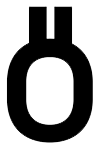TYPEVOICE
The door is already open.
I knock anyway.
Not out of politeness, but because I need a second.
To inhale.
I’m about to step into ‘the other side’.
The other typography.
Her workspace is messy. The kind of mess you don’t notice when it’s yours.
Stacks of ‘almost’ and ‘maybe’.
Test prints curling like question marks.
Ink that forgot to dry.
Letters everywhere, but not in order.
She is a graphic designer.
She is a typographer.
But she is also an artist.
Her focus is on the relationship between language and typography. My cup of tea. I don’t know many people working in this field, which makes it all the crazier that she lives just a few hundred meters away, and we’ve never met.
Nothing personal.
Different paths.
Spacing to her is a question, not a rule.
Readability is optional.
Language is a material.
I’d never felt so far out of my comfort zone.
I’m from the school of structure.
I value skills and control.
I tell letters how to behave themselves.
She makes coffee.
We talk.
Not long into the conversation, she says something that sticks.
“I think of a typeface as a voice.”
I nod.
Of course it is.
Still, it stays with me.
Loops back.
Because she’s right.
Reading is hearing.
In your head.
In that moment, in her studio, hearing her words, something shifted.
My understanding of what it means to read.
And then I thought:
Why typeFACE?
Why not typeVOICE?
‘Face’ is so…
cosmetic.
Front-facing.
Flat.
It’s what we see.
[
Even if someone puts on a poker face.
]
But voice...
Voice is presence.
Voice is tone.
Voice is mood.
Voice is what you feel.
So now,
I design
a little
differently.
IN MY HEAD...
I LISTEN to the text.
I LISTEN to the type.
And then, somewhere between the lines, in the eyes and ears of the beholder, the story is told.
Shaped by the typevoice I chose.
Heard in a way only you can feel.
